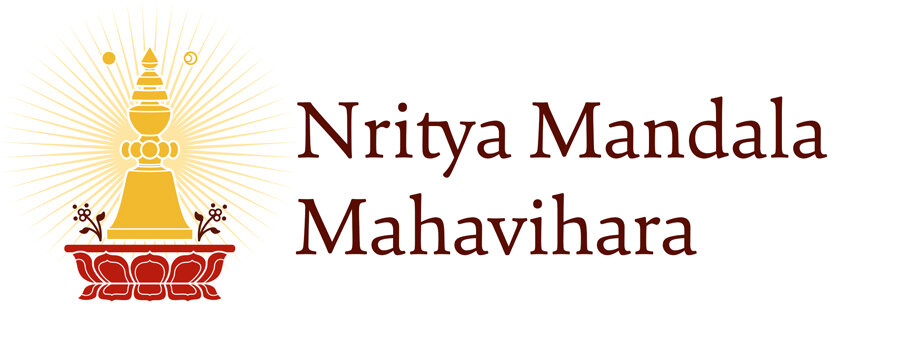Workshop on Gurumandala Puja at Nritya Mandala Mahavihara
Gurumandala Puja
Rabin Man Shakya
Nepal Oregon News
A weeklong workshop on the Gurumandala Puja concluded at Nritya Mandala Mahavihara in Portland on Tuesday, November 5, 2019. The workshop was conducted by priest and co-founder of Nritya Mandala Mahavihara Prajwal Ratna Vajracharya.
The workshop consisted of both the practical and theoretical aspects of the puja. A vajra and set of bells were used by the participants during the teaching, and Puja Sankalpa was prepared. Saptavidhanuttara Puja Sadparmita, offering the Ratnamandala to the Gurus, was also carried out.
It is to be noted that Gurumandala Puja ritual is one of the oldest and most important rituals of Newah Vajrayana tradition.
Some of the prime concerns or benefits of Gurumandala Puja are: It teaches you to go to the right path in life, to become spiritually perfect, to bring physical wellness, to give teacher-like feeling to one’s own body and to aim for attaining Nirvana, said Prajwal Ratna Vajracharya replying to a question asked by Nepal Oregon News.
The objective of the workshop is not only to familiarize the participants with the rituals of the Gurumandala Puja, but also to provide them information and study about the lines of chanting and ritualization of strotas of Gurumandala Puja, Prajwal went on saying.
A whole set of book on Gurumandala Puja printed in Sanskrit and English (together with meaning of strotas in English) was provided to each participant.
Probably, this kind of workshop to enhance and disseminate the value of Gurumandala Puja in Portland must be the first one ever in the West, says Prajwal.
Gurumandala Puja starts with paying homage to the Gurus and finishes up with Lokapalabali Puja. Gurumandala Puja consists of three different words: Guru, Mandala, and Puja. Guru means a teacher, Mandala refers to a circle, and Puja denotes a worship.
Thus, in the broader sense, Guru refers to the Buddhas, the Dharma, and the Sangha while Mandala’s meaning goes beyond the body, speech, and mind of oneself, whereas Puja means rituals and worshipping. Therefore, Gurumandala Puja can broadly be defined as the worshipping of the body, speech, and mind for attaining Nirvana.
Gurumandala Puja is an integral and indispensable part of the ritual life of Bajracharyas and Shakyas of the Kathmandu valley. Gurumandala Puja is offered by Newah Buddhists (the Bajracharyas and the Shakyas) every morning.
In his book “Guru, Mandala Wa Gurumandala” (Kathmandu, Nepal Sambat 1124), Yagyamanpati Bajracharya says ”The concept of Gurumandala is essential. Gurumandala is assumed as indispensable practice. During any kind of worshipping, Gurumandala rituals are sine quo non.” (page 16).
Likewise, in his book “Vajrayana Charya Ye Guru Mandala Puja Ya Rahasya” (Lalitpur, 2003 AD), Mahishwor Raj Bajracharya states ”According to Buddhist philosophy, Vajrayana is a progressive path moving forward under the Mahayana. Vajrayana’s means are Tantra, Mantra, and Yog Charya and its trail blazer is a Bajracharya. That means a Bajracharya is the teacher of Vajrayana, and all the devotees who follow this path are Mahayanis.” (page 2).
Further, Bajracharya says ”The Bajracharyas as teachers lead the Mahayanis to the path of Nirvana as per Vajrayana rituals. This ritual process is started first of all by Gurumandala – Charya.” (page 2).



